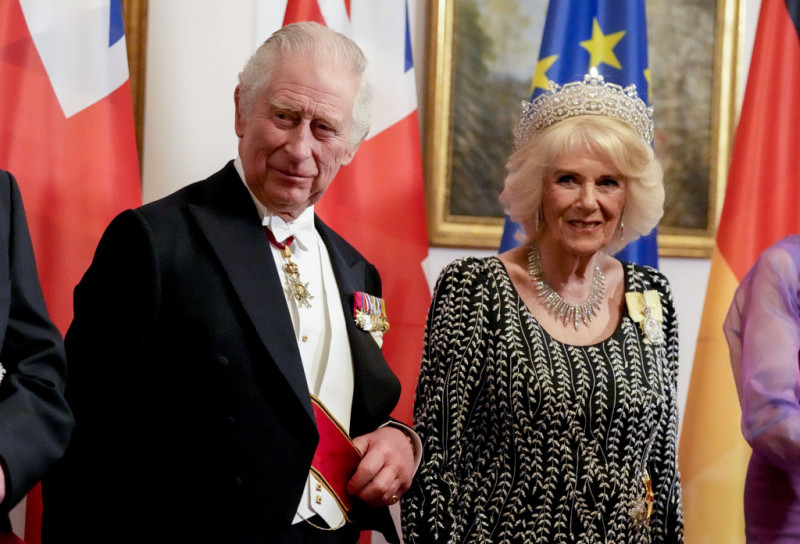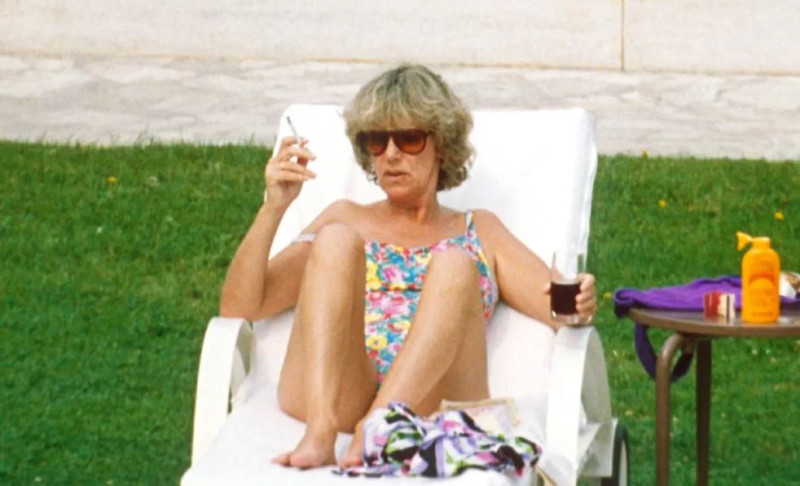She’s been in the limelight for decades, yet little is known about King Charles’ longtime mistress
As of next month’s coronation, Queen Consort Camilla will have finally ascended to the title of Queen, without the world knowing much about her. The reasons are many. He has never given interviews until now, while the few he has granted lately are typically… royal: good deeds coke.
It goes without saying, as the “Guardian” newspaper writes, that Camilla wants to avoid talking about issues such as adultery, marriage, divorce, the royal family, the gradations of the social hierarchy, Charles and Diana. In fact, these conversations have taken place with Camila as the “object”, but never as the subject.
1947-64: a remarkable childhood
Born at King’s College Hospital, south London, to Rosalind, née Cubitt, and Bruce Shand, Camilla had many surnames in her family tree, including Alice Keppel, mistress of Edward VII, and Thomas Cubitt, of after whom so many notable pubs are named.
The family were quite robust, with homes in East Sussex and South Kensington, and brought up Camilla and her younger siblings, Annabel and Mark (who died in an accident in 2014) in the usual way. One might say that they were unusual for their class and time in only one respect: they were especially supportive and affectionate.
Camilla always described them warmly, while Annabelle told Vanity Fair: “Unlike many of our generation, we had this incredibly warm, easy relationship with our parents.” Add in some dogs and horses and that magical childhood seems to have played a major role in shaping Camilla’s character. This is how her school friends – and indeed all her known associates – describe Camila: optimistic, happy, carefree.
When historians write about kings and their mistresses, they always make this point when, indeed, the king does not choose based on beauty. But if you consider the royal family, no member looks the least bit happy. And since King Charles was “metaphorically born with a headache,” in the words of royal biographer Hugo Vickers, it’s not hard to see why the heir to the throne is relentlessly drawn to the only woman in his circle who didn’t have an expression “like a licking bulldog nettle”.
He went to Queen’s Gate School in South Kensington and then to Mon Fertile, a now-defunct “refining” school in Switzerland. It seems that public schools exist to create the materials they need for the classroom they want to create.
1965-73: the debutante
By the time Camila was a 17-year-old debutante in 1965, the exit fandango was beginning to close. Ladies of society no longer presented themselves to the queen. The question that governs the whole saga of Camilla and Charles, through their relationship, through their respective first marriages and all the consequences is: if he liked her so much, why didn’t he marry her in the first place? As the “Guardian” writes, it is because, when she met Charles in 1971, she was not a virgin.
Thanks to Gyles Brandreth’s fascinating book, ‘Charles & Camilla: Portrait of a Love Affair’, we even know the date she lost her virginity and to whom (March 27, 1965, Kevin Burke). Brandreth claims in his book that he didn’t know much about Camilla when he started writing. Brandreth in the Daily Mail says he knew her as a teenager, when she used to smoke Woodbines. It was nice to be the prince’s mistress, whatever your past, but not his wife. Charles wanted to marry her at the end of 1972, but was forbidden. Apparently, she also married Parker Bowles in 1973.
1974-86: excellent mother and horse lover
One of Parker Bowles and Camilla’s breaks, in 1970, was because he thought he might have a chance with Princess Anne (he and Anne rekindled their friendship during her split from Mark Phillips in late 1980s).
After her marriage, Camilla moved to Bolehyde in Wiltshire and had two children, but she and Charles were back together from the summer of 1979, going to dances separately but kissing in public and whatnot… When Charles chose Highgrove as his residence in 1980, it was an open secret that he did so mainly because of its proximity to Bolehyde, just 10 miles away.
Charles married Diana Spencer in 1981 and insisted in his infamous interview with Jonathan Dimbleby in 1994 that nothing happened between him and Camilla. Later, Diana was adamant that Charles and Camilla were always in love.
The “Camillagate” tapes, in which a private conversation between Charles and Camilla was transcribed first by an Australian magazine and then by British tabloids, were released in 1993. The conversation itself had taken place in late 1989, when Charles and Camilla had a private but public relationship for at least three years. The tape was incredibly personal.
Diana opened up about it, first with Andrew Morton’s book in 1992, and then, three years later, with Martin Bashir’s interview and the now-familiar phrase: “there were three of us in this marriage.” Camilla and Parker Bowles divorced that year, Charles and Diana the next.
What you may not remember is how much people hated Camilla, with all their rage on Diana’s behalf. Public opinion turned against her so relentlessly that if there had been a referendum on what should be done with Charles and Camilla, Camilla would probably have ended up in prison.
However, the harshest criticism he has received is from Prince Harry. This year, he told an American journalist: “I see someone who married into this institution and did everything she could to improve her reputation and her image, for her own good.” Prince Harry accused her of leaking stories about him and William – including his time in rehab in 2002 – to the papers to improve her standing. Apparently, she was trying to make Harry look ‘like a wreck’ in order to garner sympathy for herself.
2005-23: the wedding
Charles and Camilla were married in Windsor. Harry, again, is unwittingly revealing about this. He says he and William had begged Charles not to marry Camilla but, when it became clear he was going to do it anyway, “we wished him the best. No grudge against him. We recognized that he would finally be with the woman he loved, the woman he had always loved.”
Public opinion has now softened. Mark Bolland, Charles’ former deputy private secretary, in a rare moment of candor, once said a relative of Camilla’s had called her “the laziest woman born in England in the 20th century”. But when you think about all these years, all these hoops, all this turmoil, it looks like pretty hard work…
Source :Skai
I am Frederick Tuttle, who works in 247 News Agency as an author and mostly cover entertainment news. I have worked in this industry for 10 years and have gained a lot of experience. I am a very hard worker and always strive to get the best out of my work. I am also very passionate about my work and always try to keep up with the latest news and trends.












